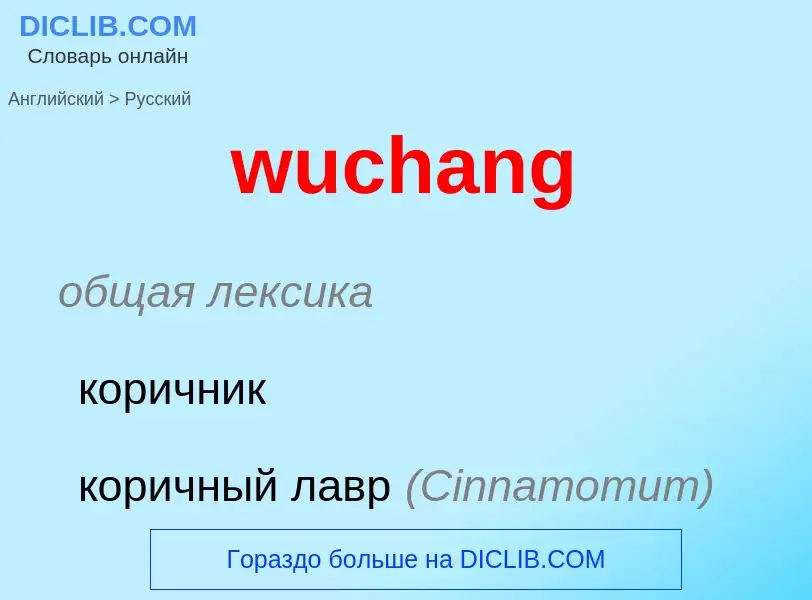Перевод и анализ слов искусственным интеллектом ChatGPT
На этой странице Вы можете получить подробный анализ слова или словосочетания, произведенный с помощью лучшей на сегодняшний день технологии искусственного интеллекта:
- как употребляется слово
- частота употребления
- используется оно чаще в устной или письменной речи
- варианты перевода слова
- примеры употребления (несколько фраз с переводом)
- этимология
wuchang - перевод на русский
общая лексика
коричник
коричный лавр (Cinnamomum)
['wu:'hɑ:n]
существительное
география
г. Ухань (общее название городов Учан, Ханькоу и Ханьян)
Википедия

Wuchang forms part of the urban core of and is one of 13 urban districts of the prefecture-level city of Wuhan, the capital of Hubei Province, China. It is the oldest of the three cities that merged into modern-day Wuhan, and stood on the right (southeastern) bank of the Yangtze River, opposite the mouth of the Han River. The two other cities, Hanyang and Hankou, were on the left (northwestern) bank, separated from each other by the Han River.
The name "Wuchang" remains in common use for the part of urban Wuhan south of the Yangtze River. Administratively, however, it is split between several districts of the City of Wuhan. The historic center of Wuchang lies within the modern Wuchang District, which has an area of 82.4 square kilometres (31.8 sq mi) and a population of 1,003,400. Other parts of what is colloquially known as Wuchang are within Hongshan District (south and south-east) and Qingshan District (north-east). Presently, on the right bank of the Yangtze, it borders the districts of Qingshan (for a very small section) to the northeast and Hongshan to the east and south; on the opposite bank it borders Jiang'an, Jianghan and Hanyang.
On 10 October 1911, the New Army stationed in the city started the Wuchang Uprising, a turning point of the Xinhai Revolution that overthrew the Qing dynasty and established the Republic of China.


![Jesuit mission]] Jesuit mission]]](https://commons.wikimedia.org/wiki/Special:FilePath/Du Halde, map of Wuchang.jpg?width=200)

